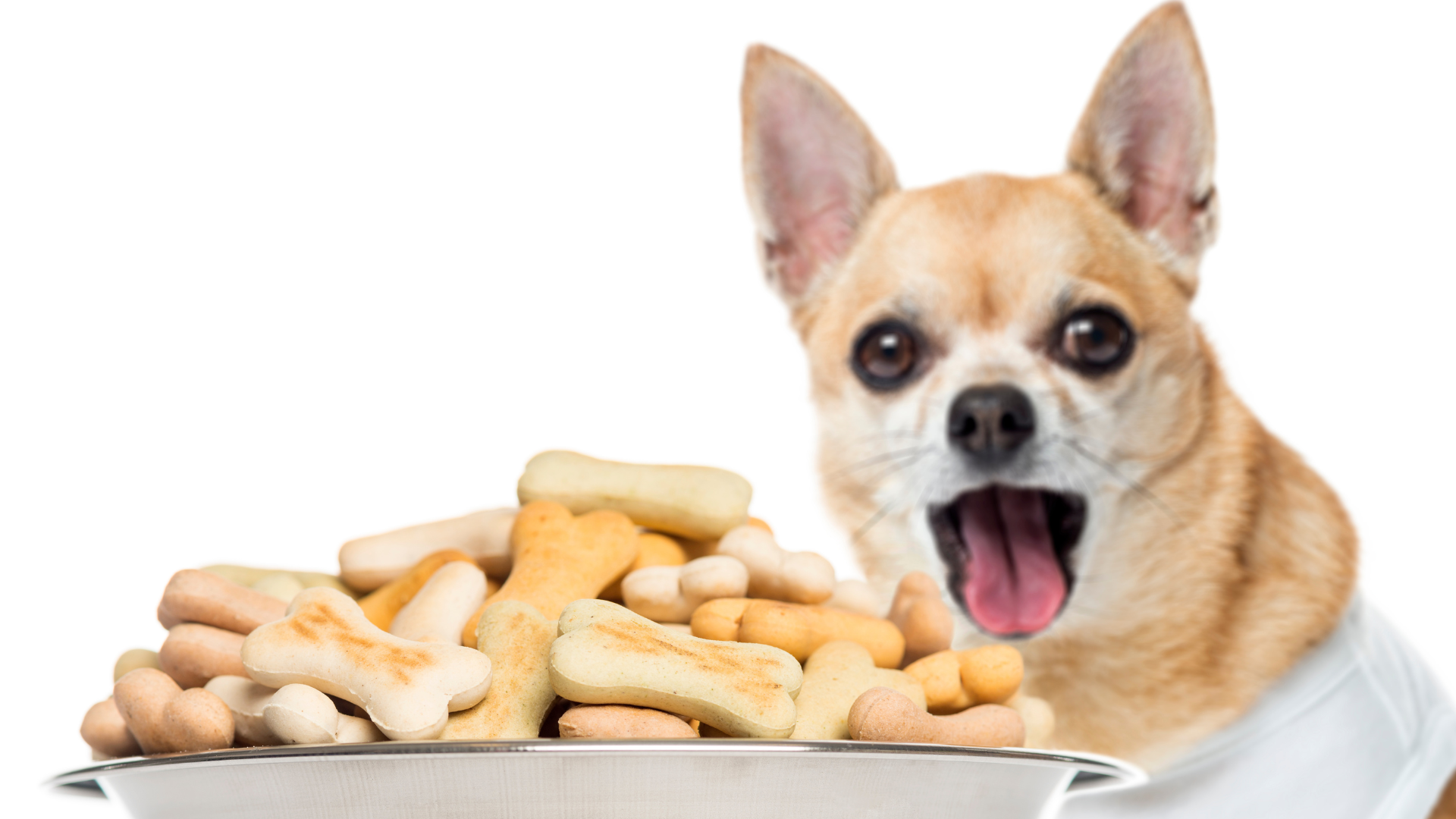Making your own dog treats at home is a fun and rewarding way to ensure your pet enjoys the freshest and healthiest snacks. Homemade dog treats allow you to control the ingredients, ensuring there are no harmful additives or preservatives. By using simple recipes, you can create delicious treats like peanut butter cups or pumpkin biscuits that will have your dog eagerly awaiting snack time.

Many easy and nutritious recipes can be found online, using common ingredients you likely already have in your kitchen. Options like biscuits, donuts, and cupcakes can be made to suit dogs of all ages and dietary needs. For example, meatloaf recipes combining beef, turkey, or pork with eggs, cottage cheese, and oats are especially popular and versatile.
For those interested in more specialized treats, recipes like bacon, chicken, and apple-cheddar biscuits provide variety and extra flavor. Some recipes even utilize silicone pyramid pans and tapioca flour for unique textures. Experimenting with different ingredients can make treat time both fun and beneficial for your furry friend.
Understanding Dog Nutrition
Proper dog nutrition involves ensuring a balanced diet and recognizing common food allergies. Special care must be taken to avoid harmful ingredients like xylitol.
Importance of a Balanced Diet
A balanced diet is crucial for maintaining a dog's health and well-being. Dogs require a mix of proteins, fats, carbohydrates, vitamins, and minerals. Proteins aid in muscle building and repair, while fats provide energy and support coat health. Carbohydrates are essential for energy, and vitamins and minerals play roles in immune function and overall health.
Key nutrients and their sources:
- Proteins: Chicken, beef, lamb, fish
- Fats: Fish oil, chicken fat
- Carbohydrates: Brown rice, sweet potatoes
- Vitamins and minerals: Fruits, vegetables, liver
Feeding your dog homemade treats can be a part of this balanced nutrition, but it is important to ensure these treats complement rather than disrupt their overall diet.
Recognising Food Allergies
Food allergies in dogs can result in itching, digestive issues, and ear infections. Common allergens include beef, dairy, wheat, and chicken.
Symptoms of food allergies:
- Itching
- Vomiting
- Diarrhea
- Ear infections
Elimination diets can help identify the allergen. Avoiding treats with known allergens and being cautious about ingredients like xylitol, which is toxic to dogs, is essential. Homemade dog treats can be tailored to avoid allergens, offering a safe treat option.
By recognizing and managing food allergies, you ensure your dog stays healthy and happy.
Essential Ingredients for Dog Treats
Creating homemade dog treats requires a balanced approach to ingredient selection. Focus on healthy bases like oat flour or sweet potato and enhance flavors naturally with ingredients such as cinnamon or peanut butter.
Choosing Healthy Bases
A solid base is essential for any dog treat recipe. Oat flour is a popular choice due to its nutritional benefits and ease of digestion. Another excellent option is sweet potato; it’s rich in vitamins and has a natural sweetness that dogs enjoy.
Pumpkin puree can also serve as a base, offering additional fiber and nutrients. Other viable bases include quick oats and almond flour, both of which are nutritious and provide a good texture. Using these bases ensures that the treats are healthy and appetizing for your pet.
Natural Flavor Enhancers
Adding natural flavor enhancers can make treats more appealing. Peanut butter is a favorite among dogs, but ensure it’s natural peanut butter without added sugars or salt. Banana can provide a sweet taste while adding potassium and fiber.
Cinnamon and parsley can be used in small amounts to add flavor and offer health benefits. For a savory option, cheese and salmon can be included to entice your dog with rich tastes and additional protein. Mixing these with ingredients like coconut oil or extra virgin olive oil can help ensure the treats are both tasty and nutritious.

Preparing Homemade Dog Treats
Making homemade dog treats can be a rewarding way to ensure your pet enjoys healthy, vet-approved snacks. Learn about baking or no-bake methods, and the best ways to store and preserve your homemade dog biscuits.
Baking Techniques
Baking dog treats offers a variety of options, from simple biscuits to more elaborate creations. Use a baking sheet lined with parchment paper to prevent sticking. Cookie cutters can be used to shape the dough into fun designs.
Many dog treat recipes require basic ingredients like whole wheat flour, peanut butter, and sweet potatoes. Combine these ingredients, roll out the dough, and cut into shapes. Bake at 350°F for 10-20 minutes depending on the recipe.
For a more nutritious option, try healthy dog treat recipes that incorporate ingredients like flaxseed, oats, and cranberries. Always ensure treats are fully cooked and cooled before serving to your dog.
No-Bake Options
No-bake treats can be quicker to make and still provide nutritious snacks for your dog. For instance, using an ice cube tray or silicone mold, you can blend ingredients like Greek yogurt, strawberries, bananas, and honey.
Here’s a simple method: mix a 16 oz. bag of frozen strawberries, 1 1/2 cups plain low-fat Greek yogurt, 1 banana, and 3 Tbsp honey. Pour into molds and freeze. These treats are not only tasty but also cooling during hot weather.
No-bake recipes often need to be refrigerated or frozen to keep fresh. The versatility of no-bake methods means you can experiment with different flavors and textures, ensuring your dog gets a variety of tastes.
Storage and Preservation
Proper storage is key to maintaining the freshness and safety of homemade dog treats. For baked treats, store them in an airtight container at room temperature for up to a week. Refrigeration can extend this time to about two weeks.
Freezing is also an option, especially for larger batches. Place treats in a ziplock bag or airtight container and freeze for up to three months. This is particularly useful for no-bake treats, which are best stored in the refrigerator or freezer.
Avoid using artificial preservatives and always monitor for signs of spoilage. Remember to feed treats in moderation as part of a balanced diet. This ensures your dog enjoys the best of breed dog biscuits while staying healthy.

Special Occasion Dog Treats
Creating special occasion dog treats at home allows pet owners to celebrate important moments with their furry friends using healthy and delicious recipes tailored to canine preferences.
Birthday and Celebration Treats
For birthdays, a homemade dog cake can be a delightful centerpiece. These cakes often use ingredients like sweet potatoes, carrots, and peanut butter, which are both tasty and safe for dogs. A popular recipe involves combining whole wheat flour, mashed sweet potatoes, and peanut butter for a nutrient-rich cake.
Carrot peanut butter pupcakes are also a hit for celebrations. These small, cupcake-sized treats are made with grated carrots, whole wheat flour, and peanut butter. Easy to personalize, they provide a fun way to include dogs in special events. Many pet owners also enjoy making peanut butter pupcakes, which substitute mashed bananas for added natural sweetness and a moist texture.
For a simpler treat, peanut butter coconut oil treats combine peanut butter and coconut oil for a flavorful and nutritious option. Poured into silicone molds, these treats can be customized with shapes suitable for the occasion. These treats are not only tasty but also offer the benefit of healthy fats.
Seasonal Dog Treat Ideas
Season-specific treats add a festive touch to various holidays and seasonal changes. During the holiday season, consider baking cranberry and oat cookies. These treats are made with gluten-free oats, flaxseed, and cranberries, providing an antioxidant boost and a festive red color suitable for celebrations.
Valentine's Day treats can include strawberry banana carob marble treats. Made with carob powder as a chocolate substitute, these treats offer a sweet yet safe option for dogs. For Halloween, pumpkin dog treats are popular. These treats use canned pumpkin, whole wheat flour, and cinnamon, creating a seasonal flavor dogs love.
Summertime treats often involve cooling options like frozen peanut butter and banana bites. Using blended peanut butter, Greek yogurt, and banana, these treats are poured into molds and frozen, offering a delicious and refreshing snack for hot weather.
Variety of Dog Treat Recipes
Dog owners have a myriad of options for creating homemade dog treats that cater to their pets' preferences and dietary needs. From classic favorites to healthier alternatives, there's something for every pup.
Puppy-Approved Classics
Peanut Butter Dog Treats stand out as an all-time favorite. Combining peanut butter, eggs, and whole wheat flour, these treats are both nutritious and simple to prepare. For a touch of sweetness without added sugar, some recipes incorporate applesauce.
Another classic is the Bacon Dog Treats, often made by mixing bacon pieces with flour and eggs. These treats can be shaped into fun forms and baked to a crisp that dogs love. Bacon adds a savory flavor that keeps pups coming back for more.
Frozen Dog Treats offer a refreshing option during warmer months. Using yogurt as a base, owners can blend in fruits like blueberries or raspberries for variety. The mixture is then frozen in molds, creating a cooling, tasty treat.
Healthy Alternatives
For dogs with dietary restrictions, Grain Free Dog Treats are a great option. Commonly made with ingredients like chickpea flour or coconut flour, they often combine nutrient-rich additives such as pureed pumpkin or sweet potatoes.
Pumpkin Dog Treats are another nutritious choice, often made with pureed pumpkin, oats, and eggs. Pumpkin is high in fiber and can aid in digestion.
Owners looking for protein-packed options can opt for Chicken Dog Treats. These recipes usually involve ground chicken mixed with flour and carrots for added vitamins. Shaping the mixture into small bites and baking them results in a protein-rich treat that's easy to serve.
Healthy Cranberry & Oat Treats are another option, made with gluten-free oats, flaxseed, and antioxidant-rich cranberries. Such recipes ensure that dogs receive a variety of nutrients while enjoying their treats.
Frequently Asked Questions
Homemade dog treats can be both simple and nutritious. This section covers recipes, healthy ingredients, and specific guidelines for creating various types of treats.
- What are some simple recipes for making dog treats at home?
- For easy dog treats, consider making cranberry and oat treats. These are made with gluten-free oats, flaxseed, and cranberries. Alternatively, mix peanut butter, Greek yogurt, and banana for a quick, customizable treat.
- How can I make healthy dog treats?
- Healthy dog treats often incorporate nutritious ingredients. Using pumpkin and peanut butter can be a good start. Adding elements like flaxseed, plain yogurt, and antioxidant-rich fruits ensures the treats benefit your dog's health.
- Which three ingredients are essential for homemade dog treats?
- Common essentials are oats, peanut butter, and pumpkin. Oats provide a gluten-free base, peanut butter offers protein, and pumpkin is rich in fiber and vitamins. Those looking for simple, yet effective treat bases often rely on these core ingredients.
- Are there any vet-approved homemade dog treat recipes?
- Yes, there are several. For instance, pumpkin peanut butter dog treats are often recommended. These use ingredients like cooked chicken, plain yogurt, and blackberries that are beneficial for dogs.
- How to create no-bake dog treats?
- No-bake options can be convenient. Mix peanut butter with Greek yogurt and add a ripe banana, then blend the mixture. This process results in a healthy, delicious treat without the need for baking. Adding fruits like blueberries or strawberries can enhance the flavor.
- Can you suggest homemade dog treat recipes without peanut butter?
- Certainly, treats without peanut butter can include combinations like cranberry and oat or pumpkin and yogurt. Using cranberry dog treats provides a nut-free option that remains healthy and easy to prepare. Alternatively, blend oats with fruits for a varied option.




